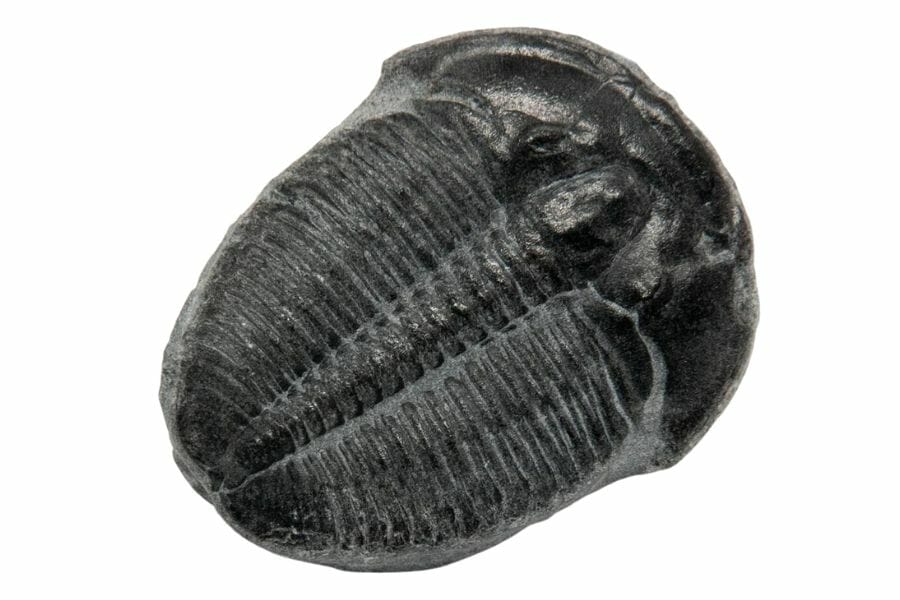Exploring Washington is like taking a journey back in time. With every step, you’re walking on ground that once teemed with life. Those stories are now captured as Washington fossils, revealing a lively past.
From the mountains to the coast, there are spots where enthusiasts and curious minds alike can discover remains of creatures that once roamed this land.
The joy of finding a fossil is like unlocking a secret, a little piece of history. So, grab your tools and your sense of adventure, and let’s delve deep into the fascinating world of fossils in Washington.
The Fossils Of Washington You Can Find
There’s a rich tapestry of life preserved as fossils in Washington, just waiting to be discovered. From marine creatures to long-gone plants, the evidence of the state’s geological history is all around.
If you’re interested in finding more than just fossils, you should also check out our guide to Washington rockhounding, there are a lot of incredible rocks and minerals that you can find.
- The extensive local experience and understanding of our team
- Input from multiple local fossil hunters and fossil groups
- The accessibility of the various locations
- Safety and potential hazards when collecting
- Private and public locations
- A desire to include locations for both experienced fossil lovers and those who are just starting out
Using these weights we think we’ve put together the best list out there for those who love finding great new fossils for our collections!
Common Washington Fossils
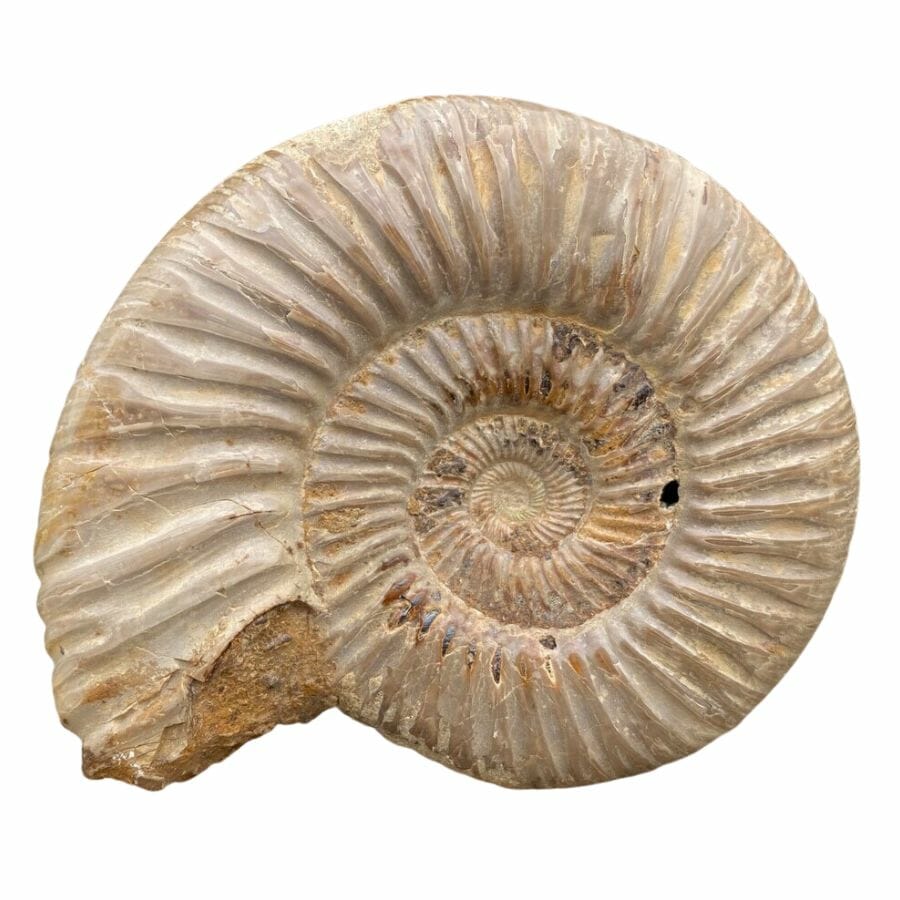
Here are the common Washington fossils that explorers usually uncover in the state. You’ll likely come across at least one of these on your explorations.
- Plant fossils
- Petrified wood
- Gastropods
- Hermit crabs
- Mollusks
- Trilobites
- Brachiopods
- Corals
- Crinoids
Washington State Fossil – Columbian Mammoth
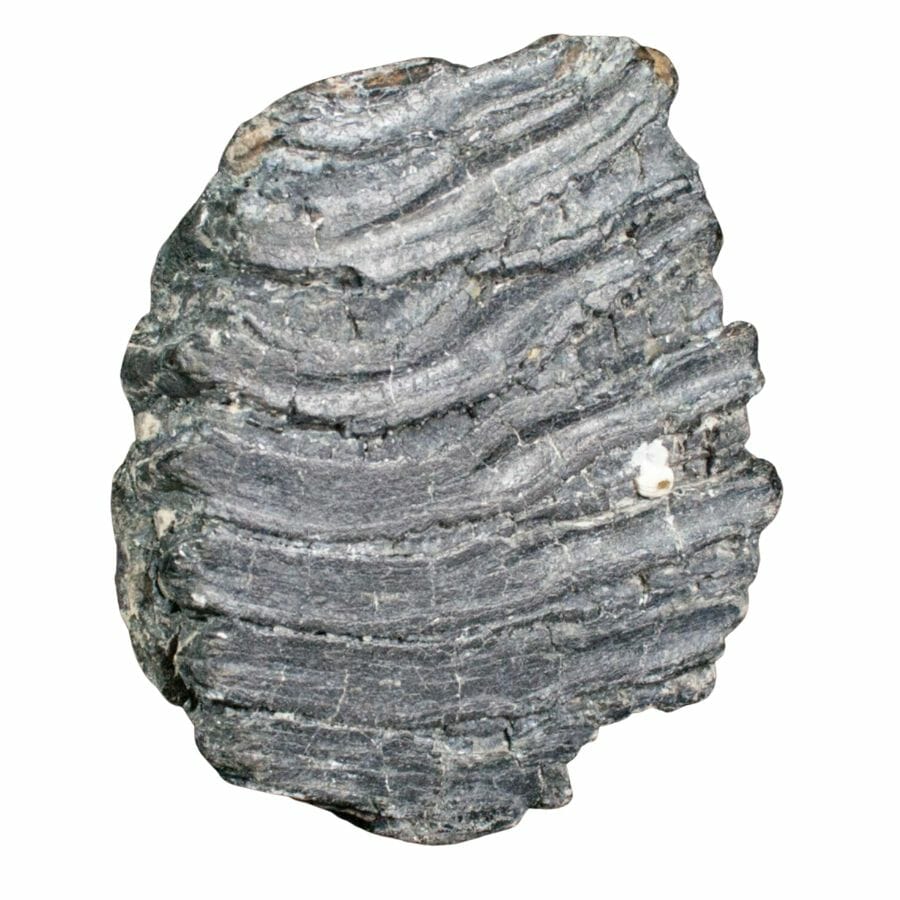
The Columbian mammoth was an ancient elephant-like creature that once roamed North America. Bigger than its cousin, the woolly mammoth, it had long, curved tusks and stood about 14 feet tall.
These giants lived during the Ice Age and are often found as fossils, especially in the western parts of the US, like Washington. They were herbivores, munching on various plants to fuel their massive bodies.
Rare Washington Fossils
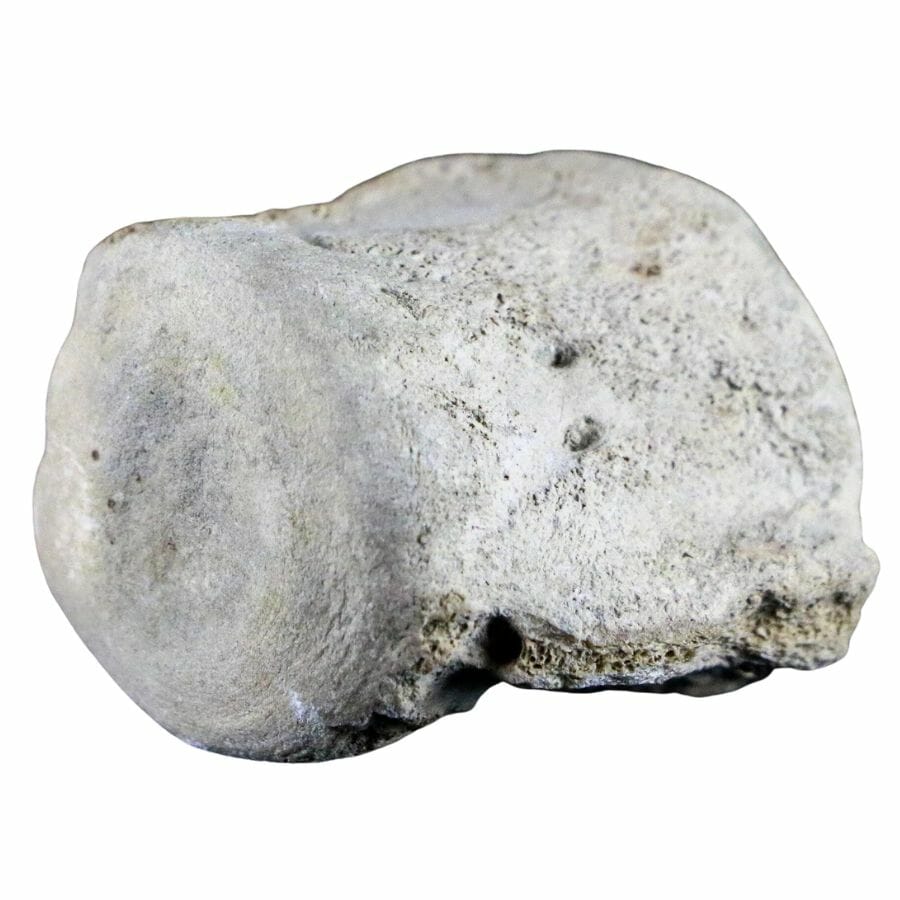
Diving into the world of geology reveals the valuable rare Washington fossils tucked away in its landscapes. Here are some valuable and surprising finds:
- Cetacean bones
- Mammoth fossils
- Dinosaur bones
The Best Places To Find Fossils In Washington
There are more places in Washington that harbor fossils than you might expect. But here are the top five spots where there’s a higher chance that you’ll uncover an amazing discovery.
Always Confirm Access and Collection Rules!
Before heading out to any of the locations on our list you need to confirm access requirements and collection rules for both public and private locations directly with the location. We haven’t personally verified every location and the access requirements and collection rules often change without notice.
Many of the locations we mention will not allow collecting but are still great places for those who love to find beautiful rocks and minerals in the wild without keeping them. We also can’t guarantee you will find anything in these locations since they are constantly changing.
Always get updated information directly from the source ahead of time to ensure responsible rockhounding. If you want even more current options it’s always a good idea to contact local rock and mineral clubs and groups
Puget Sound
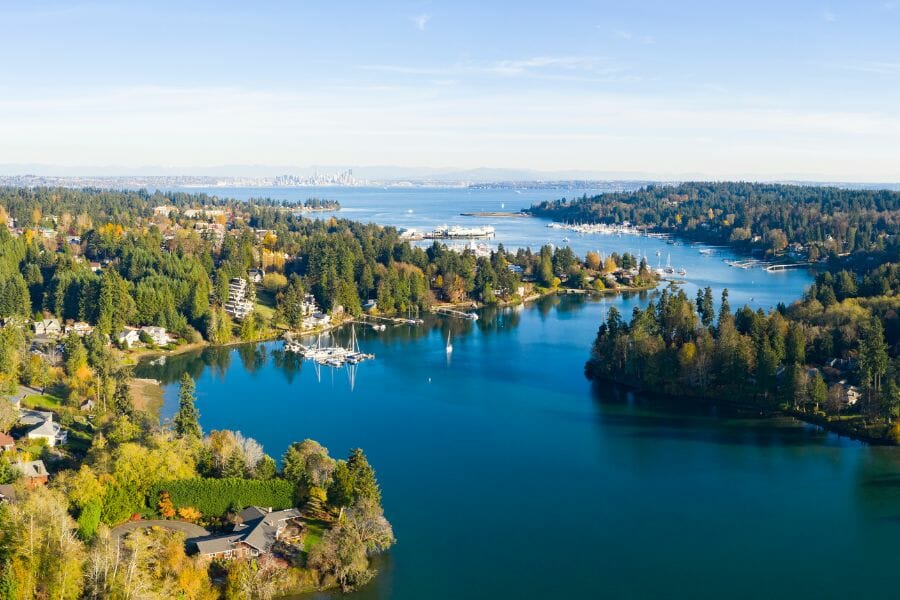
Many fossils of Washington are discovered along the beaches of Puget Sound, giving us a peek into the state’s ancient marine life.
Puget Sound is an amazing body of water that stretches over 100 miles, from the Olympic Peninsula to Seattle and beyond. It’s an inlet of the Pacific Ocean, filled with islands, bays, and channels.
Geologically speaking, Puget Sound was sculpted by glaciers thousands of years ago. These glaciers carved out the deep channels and deposited rich sediments, which today support a variety of plants and animals.
The region has a mix of rocky shorelines, sandy beaches, and dense forests, making it a diverse habitat for wildlife.
Getting to the Puget Sound is a breeze! With many major highways and ferry routes leading to the region, it’s easily accessible whether you’re driving, biking, or even walking.
If you’re keen on exploring, you’ll find parks, trails, and viewpoints all around the sound. It’s truly a gem in the Pacific Northwest, waiting for every rockhound and nature lover to explore its wonders.
Where to find fossils in Puget Sound
When you stroll along the beaches of Puget Sound, watch for marine fossils. You might be able to find fossilized clams, snails, and other sea creatures.
If you want REAL results finding incredible rocks and minerals you need one of these 👇👇👇
Finding the coolest rocks in isn’t luck, it's knowing what to look for. Thousands of your fellow rock hunters are already carrying Rock Chasing field guides. Maybe it's time you joined the community.
Lightweight, mud-proof, and packed with clear photos, it’s become the go-to tool for anyone interested discovering what’s hidden under our red dirt and what they've already found.
Join them, and make your next rockhounding trip actually pay off.
What makes it different:
- 📍 Find and identify 140 incredible crystals, rocks, gemstones, minerals, and geodes across the USA
- 🚙 Field-tested across America's rivers, ranchlands, mountains, and roadcuts
- 📘 Heavy duty laminated pages resist dust, sweat, and water
- 🧠 Zero fluff — just clear visuals and straight-to-the-point info
- ⭐ Rated 4.8★ by real collectors who actually use it in the field
Stonerose Interpretive Center and Eocene Fossil Site
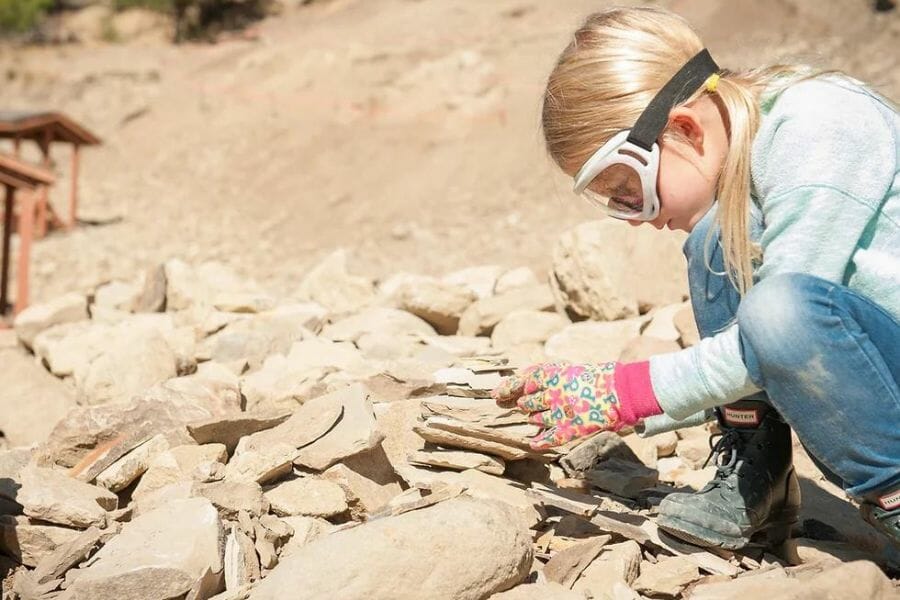
The Stonerose Interpretive Center and Eocene Fossil Site is a must-visit spot for anyone interested in fossils in Washington.
This location is famous for fossils from the Eocene era, which means some of these finds are over 50 million years old
As you search, you might come across fossilized leaves, insects, and even fish. The great part is, you can actually dig for fossils here, making it a hands-on adventure for both kids and adults.
To help visitors understand and appreciate their finds, the nearby Interpretive Center showcases fantastic fossil specimens and offers tons of information about the site’s history and geology.
It’s a learning hub for everyone, from curious beginners to seasoned rockhounds.
Reaching Stonerose is straightforward. Located in the northeastern part of the state, it’s just a drive away for most Pacific Northwest residents. Major roads lead to Republic, and clear signs will guide you straight to this fossil-rich destination.
Where to find fossils in the Stonerose Eocene Fossil Site
Stonerose Eocene Fossil Site in Republic, Washington, is a treasure chest of ancient finds. As you dig, you can uncover fossils from over 50 million years ago.
Common discoveries include perfectly preserved insects as well as fish and leaf impressions.
The nearby Interpretive Center showcases some of the best specimens, offering a glimpse into the rich history of the area.
Chuckanut Formation
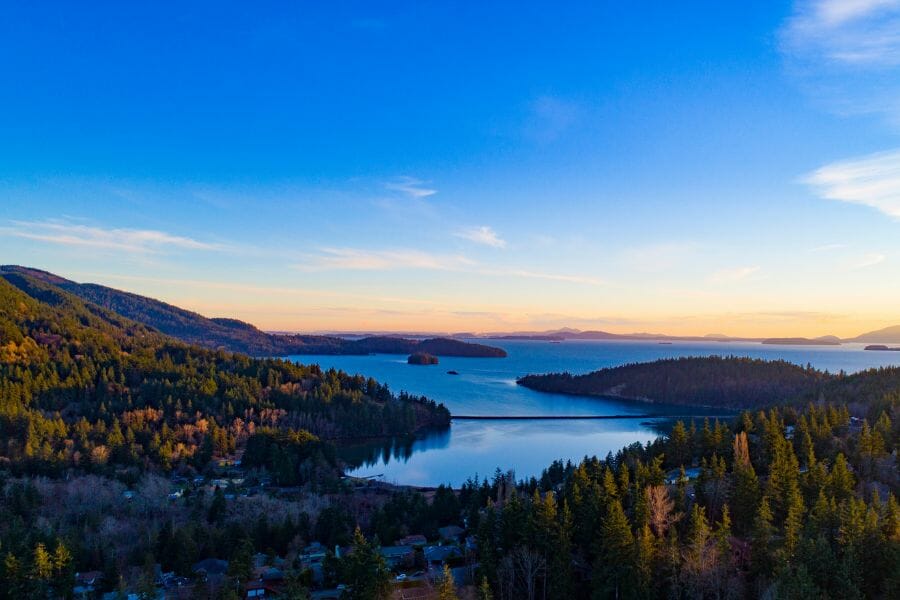
The Chuckanut Formation in Washington is a rock star in the world of geology! Located near Bellingham, this formation stretches over a vast area and offers breathtaking views.
The terrain here is a mix of steep cliffs, rolling hills, and dense forests.
Enthusiasts often uncover common Washington fossils in the Chuckanut Formation during their searches. it’s packed with sedimentary rocks that date back millions of years.
For rockhounds, it’s a dream come true because you can find traces of fossilized plants and even some animal footprints.
Getting to the Chuckanut Formation is super easy. It’s just a short drive from Bellingham, with well-marked routes leading you directly to some of its most popular spots.
Whether you’re hiking, biking, or just out for a scenic drive, this geologic wonder welcomes all curious minds eager to explore and learn.
Where to find fossils in the Chuckanut Formation
The Chuckanut Formation in Washington is a fantastic spot for fossil enthusiasts. Nestled near Bellingham, it’s known for its sedimentary rocks filled with fossils.
As you explore, you’ll come across fossils of prehistoric plants, ferns, and even some traces of animal footprints. These relics give us a peek into a world millions of years ago, showcasing the rich history of the region.
Ginkgo Petrified Forest State Park
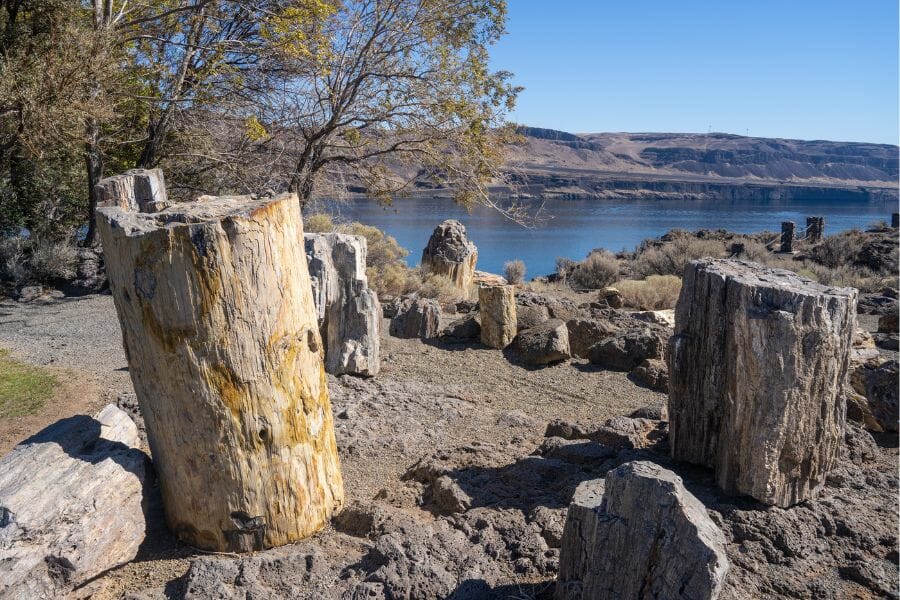
Ginkgo Petrified Forest State Park in Washington is a real gem for rockhounds. Located in Eastern Washington, near the town of Vantage, this park spans over 7,000 acres.
It’s named after the rare petrified Ginkgo wood found there, which is a big deal because Ginkgo trees are usually associated with ancient Asia, not North America!
The terrain is diverse, with sagebrush desert landscapes, the shimmering waters of the Wanapum Reservoir, and basalt cliffs. These cliffs show layers of lava flows, telling a tale of fiery volcanic activity from millions of years ago.
When you walk through the park, you’ll notice beautiful petrified wood pieces showcasing various trees that formed a forest millions of years ago.
The park is right off Interstate 90, making it easily accessible by car. Once you’re there, there are well-marked trails and interpretive displays, so you can learn and explore at your own pace.
Where to find fossils in the Ginkgo Petrified Forest State Park
In the Ginkgo Petrified Forest State Park, you can find petrified wood from various trees, including the rare Ginkgo tree, which gives the park its name.
Alongside these, there are also fossils of plants and insects trapped in the stone.
Clallam County
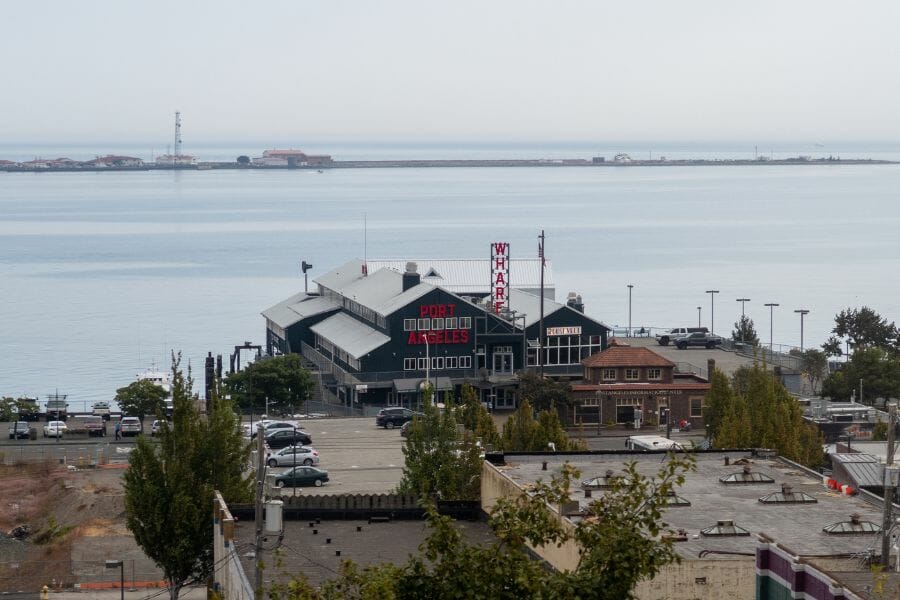
Clallam County is a great place for enthusiasts to discover unique fossils in Washington. It’s a scenic spot, nestled right on the northwestern tip of the state.
It boasts a mix of beautiful coastlines along the Strait of Juan de Fuca and the rugged peaks of the Olympic Mountains.
The area’s geography is diverse, offering both beach lovers and mountain enthusiasts a place to explore. The terrain is a blend of rocky shores, dense forests, and mountain trails.
One of the geologic highlights of Clallam County is the Clallam Formation.
This formation is known among rockhounds for its rich trove of Washington fossils, offering a peek into the marine life that once thrived in the region millions of years ago.
The Clallam Formation tells tales of a time long past and adds to the county’s allure for those interested in earth’s history.
Getting to Clallam County is pretty straightforward. It’s well connected by road, with U.S. Route 101 running through it. This highway provides a direct route for visitors, making the county easily accessible for day trips or weekend getaways.
Where to find fossils in Clallam County
Places like Port Angeles, Agate Beach, and Clallam Bay, along with Neah Bay, Seqium Bay, and West Twin Rivers, are rich with different kinds of fossils.
You can discover marine vertebrates, invertebrates, and even cetacean bones. The region also boasts a variety of fossilized sea creatures, including Turricula, Aforia, Nautiloidea, and Pecten, to name a few.
Other Top Places To Find Washington Fossils By Region
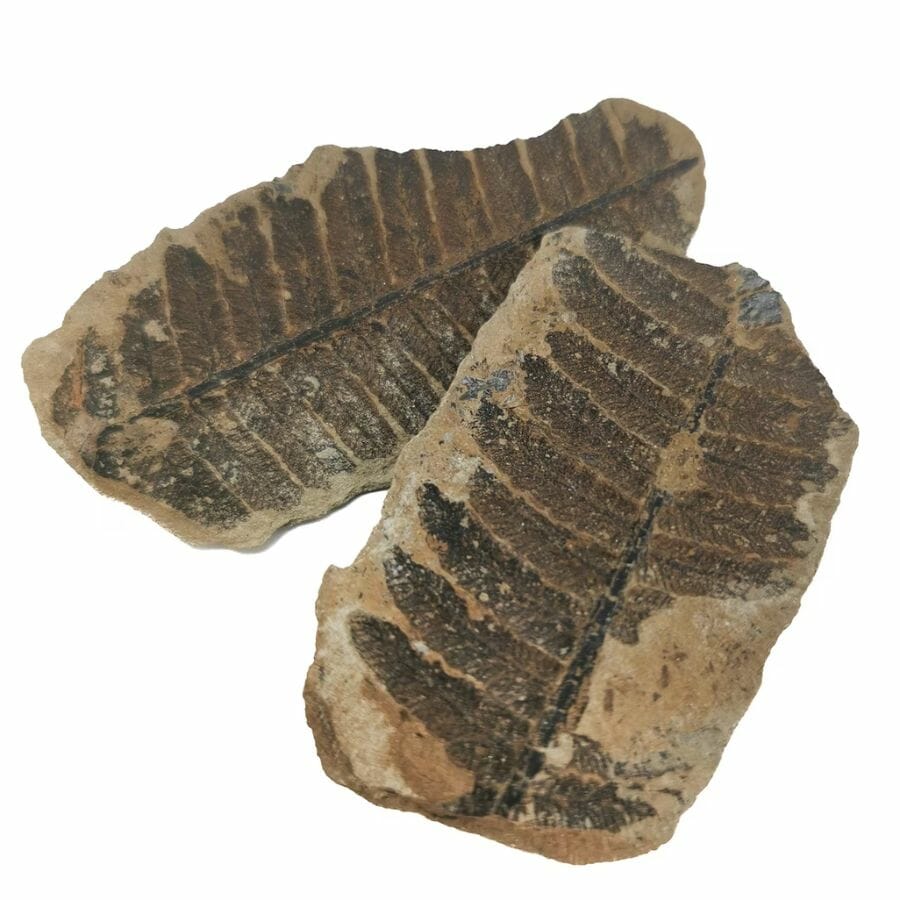
From the coastal areas to the eastern plains, there are many areas brimming with fossils. You might even come across some valuable rare Washington fossils.
| Location | Fossils |
| Malone, Grays Harbor County | Silicified and agatized clams and oysters |
| Issaquah, King County | Amber |
| Preston area coal beds, King County | Amber |
| Willapa River, Pacific County | Silicified and agatized clams and snails |
| Raymond, Pacific County | Silicified ammonites and clams |
| Blue Lake, Grant County | Blue Lake Rhino |
| Cle Elum, Kittitas County | Eocene plant fossils |
| Racehorse Creek landslide, Whatcom County | Plant fossils |
| Wiley, Clark County | Petrified wood |
| Castle Rock, Cowlitz County | Petrified drift wood, Pecten |
| Cowlitz River | Mollusks |
| Palisades, Douglas County | Petrified wood |
| Republic, Ferry County | Plant fossils |
| Lake Kahlotus, Franklin County | Fish, reptile, mammal, and amphibian bones |
| Columbia river bluffs, Franklin County | Fish, reptile, mammal, and amphibian bones |
| Ringold Flat, Franklin County | Mammal fossils |
| White Bluffs, Franklin County | Mammal fossils |
| Mattawa, Grant County | Petrified wood |
| Mazama, Grant County | Fossil ferns |
| Saddle Mountains, Grant County | Petrified walnut |
| Aberdeen, Grays Harbor County | Pelecypods, gastropods |
| Hoquiam, Grays Harbor County | Pelecypods, gastropods |
| Lankner Creek, Grays Harbor County | Oligocene faunas |
| Montesano, Grays Harbor County | Pelecypods, gastropods |
| Oakville, Grays Harbor County | Silicified clams and pelecypods. |
| Porter, Grays Harbor County | Gastropods, crabs, mollusks, invertebrates |
| Silvia Creek, Grays Harbor County | Pelecypods, gastropods |
| Seattle, King County | Pelecypods, gastropods |
| Ellensburg, Kittitas County | Petrified wood |
| Bickleton, Klickitat County | Petrified wood |
| Gries Ranch, Lewis County | Marine fossils |
| Twisp, Okanogan County | Ammonites |
| Willipa Hills, Pacific County | Plants, crustacea, petrified wood |
| Metaline Falls, Pend Oreille County | Trilobites and brachiopods. |
| Sucia Island, San Juan | Cephalopods, Desmophyllites |
| Clear Lake, Skagit | Trilobites |
| Opportunity, Spokane County | Fossil plants |
| Rice, Stevens County | Graptolites |
| Tono, Thurston County | Petrified wood |
| Lewis-Cowlitz, Wahkiakum County | Mollusks |
| Bellingham, Whatcom County | Palms, horsetails, leaves, Sequoia needles, petrified wood |
| Maple Falls, Whatcom County | Cretaceous and Eocene plants, bryozoa,brachiopods |
| Belmont, Whitman County | Petrified wood |
| Sunnyside, Yakima County | Petrified wood |
Common Questions About Fossil Hunting In Washington
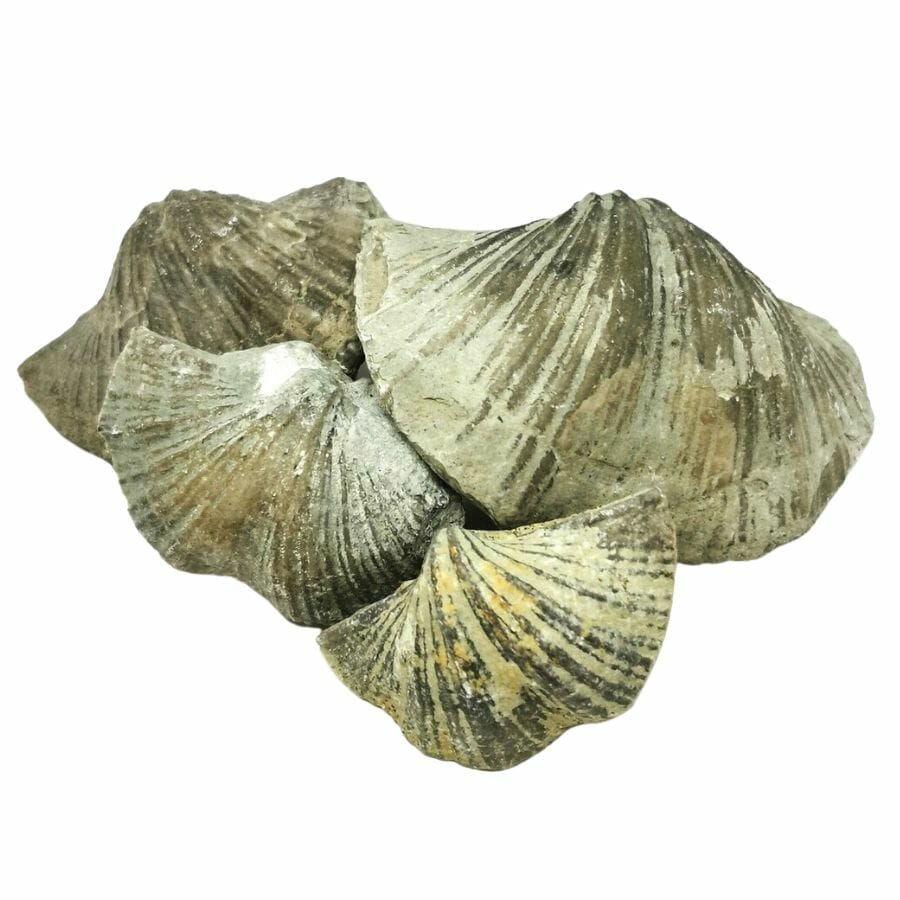
Here are the answers to some of the most common questions about the kinds of fossils that you might discover in Washington.
Can you find megalodon teeth or shark teeth in Washington?
It’s unlikely that you’ll come across megalodon teeth in Washington.
Megalodon, a giant shark that lived 23 to 3.6 million years ago, lived in warm ocean waters. Washington’s coastal regions, back in the megalodon’s time, were not the ideal spot for these massive creatures.
However, you might be able to unearth teeth from other kinds of sharks among the fossils of Washington. They’re not very common in the state, but it’s always exciting when someone finds one!
Some shark species did call this region home. This means while finding a megalodon tooth in Washington might be like searching for a needle in a haystack, there are other types of shark teeth that you can stumble upon.
Coastal areas and riverbanks are potential spots to search, especially places where erosion reveals layers of older sediments.
Is it illegal to collect fossils in Washington?
In Washington, the rules for rockhounding and collecting fossils depend on where you are and what you’re collecting.
On federal lands, like national parks and forests, collecting vertebrate fossils is not allowed. This means that collecting dinosaur bones in Washington, should you see them, is prohibited.
But invertebrate fossils, like shells or plants, are usually fair game for personal use.
The rules can vary on state lands, but many state parks don’t allow fossil collecting. It’s always a good idea to check with park rangers or local officials before you start searching.
Private lands are a different story. If you want to hunt for fossils there, you’ll need permission from the landowner. Never trespass or take fossils without asking first.
Lastly, always be respectful of nature. Even if collecting is allowed, don’t dig huge holes or damage the environment. And remember, some fossils are super important for science and should be shared with researchers.
Can you find dinosaur bones in Washington?
Yes, you can find dinosaur bones in Washington, but they are relatively rare. Washington is not as well-known for dinosaur fossils as some other states, largely due to its geologic history and the types of rocks that are exposed at the surface.
However, in 2015, a significant discovery was made: the first confirmed dinosaur fossil in Washington! It was a fragment of a theropod bone, a group of carnivorous dinosaurs that includes creatures like Tyrannosaurus rex and Velociraptor.
This particular fossil was found along the shores of Sucia Island in the San Juan Islands.
While this was a groundbreaking find, it also highlights how uncommon dinosaur bones are in Washington. Most of the state’s fossil-rich areas contain marine fossils or plant fossils from times when dinosaurs weren’t present.
For those eager to find fossils in Washington, it might be more productive to search for marine or plant fossils, which are more abundant and widespread.
Still, the 2015 discovery proves there’s always potential for new and exciting finds!
How do you identify the fossils that you find?
First, look at the shape and texture. Fossils might look like shells, leaves, or even bones. If it’s in sedimentary rock, like shale or limestone, there’s a better chance it’s a fossil.
Color can give you hints too. As fossils age, minerals change their colors. Sometimes, they’re a different shade than the rock around them. Knowing where you found it helps as well.
Grab a fossil guidebook for your area. These books have pictures and descriptions. They’re like a matching game for your fossil. Online, there are websites and forums where people show their fossils and get help identifying them.
If you’re stuck, ask an expert. Museums, universities, or local rock and fossil clubs might have someone who can help. Take photos of your fossil from different sides. If you’re showing someone or posting online, these pictures help a lot.
Our Favorite Places To Buy Fossils In Washington
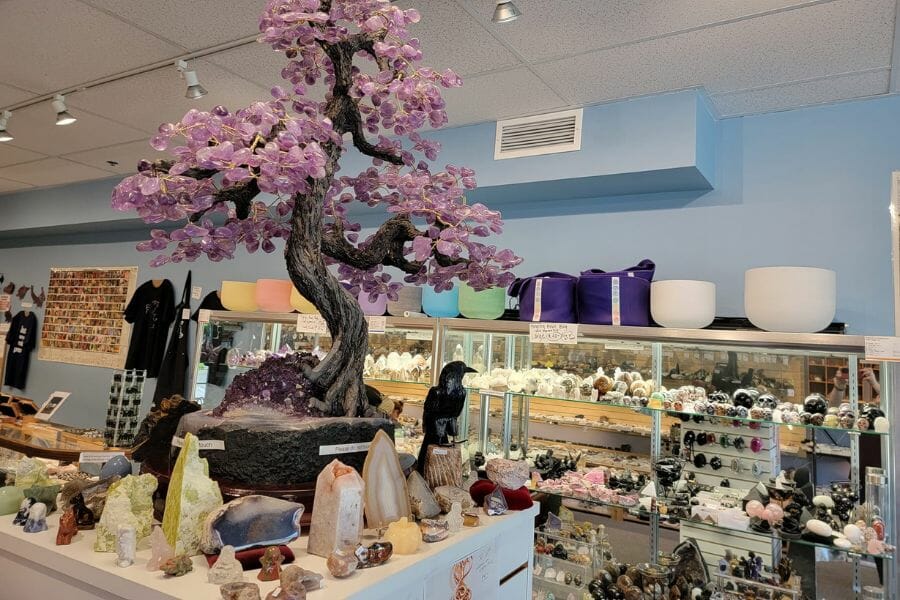
There are several top-notch shops scattered around the state where you can find amazing fossil specimens. From tiny trilobites to massive mammoth tusks, these stores have something for everyone.
- Jerry’s Rock & Gem – 804 W Valley Hwy, Kent, WA 98032
- Moore Than Rocks – 315 W Meeker St, Kent, WA 98032
- Earthlight Gems & Minerals – 46 Lakeshore Plaza, Kirkland, WA 98033
- NW Rockhounds – 2720 NE 115th St, Seattle, WA 98125
- Agate Designs – 317 NW Gilman Blvd #15, Issaquah, WA 98027

